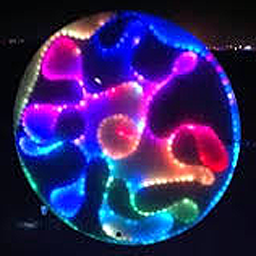90 leds[0] =
CRGB(255,0,0);
91 leds[1] =
CRGB(0,255,0);
92 leds[2] =
CRGB(0,255,0);
93 leds[3] =
CRGB(0,0,255);
94 leds[4] =
CRGB(0,0,255);
95 leds[5] =
CRGB(0,0,255);
96 leds[6] =
CRGB(0,0,0);
CFastLED FastLED
Global LED strip management instance.
central include file for FastLED, defines the CFastLED class/object
void show(uint8_t scale)
Update all our controllers with the current led colors, using the passed in brightness.
Representation of an RGB pixel (Red, Green, Blue)

